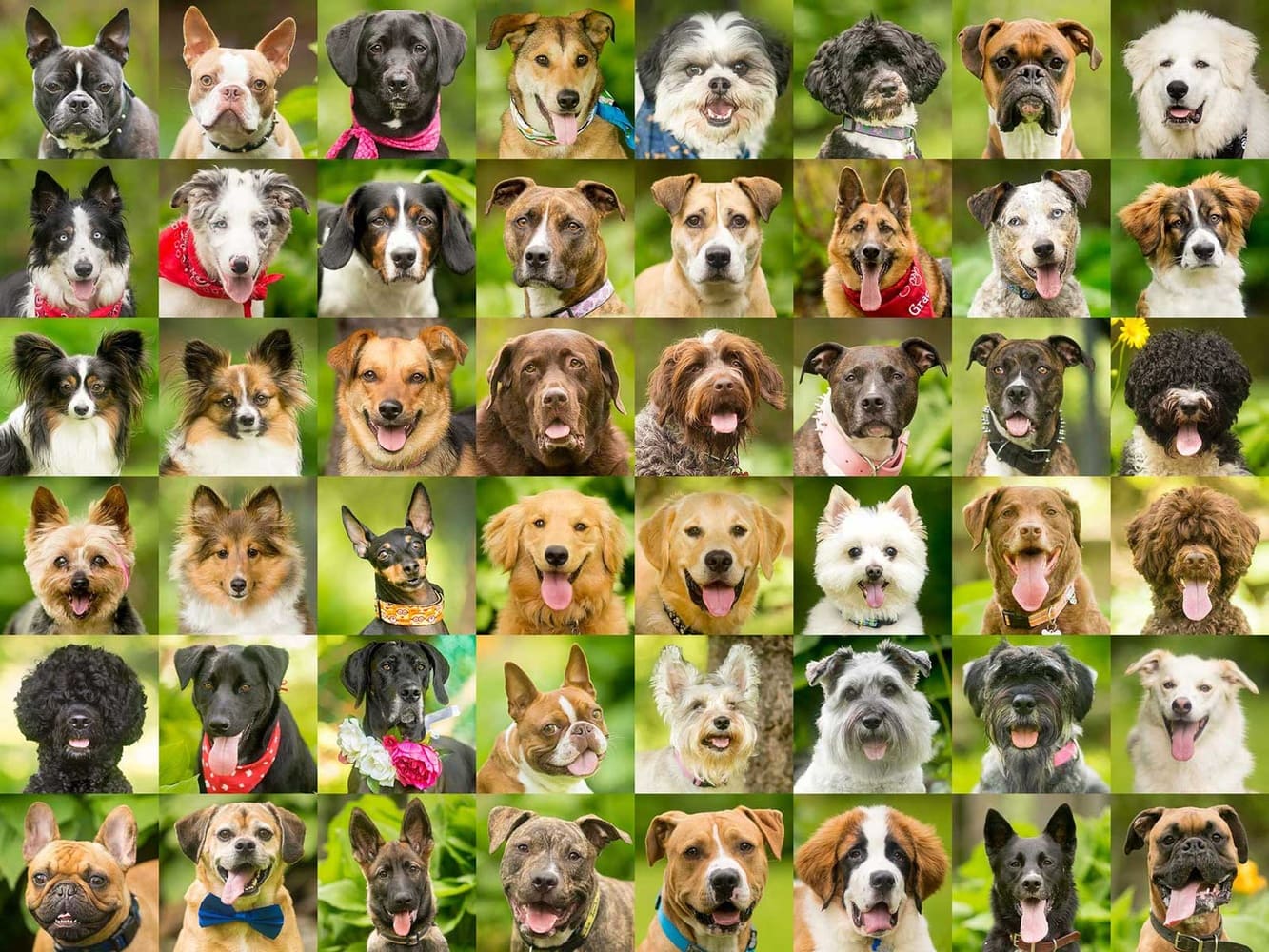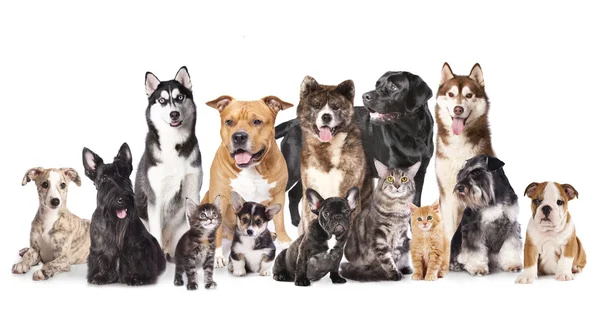
At first glance, it may seem like dog faces are all the same. After all, they all have a snout, two eyes, and a set of ears. But take a closer look, and you’ll see that each breed has its own distinct features – from the wrinkled face of a bulldog to the curly fur of a poodle.
Despite their differences, one thing remains constant: dogs’ ability to express themselves through their facial expressions. It’s something we humans often take for granted – but when you think about it, our furry friends are communicating with us all day long through subtle shifts in their eyebrows or the tilt of their head.
In fact, understanding these signals is key to building a strong bond with your pup. So let’s dive into the fascinating world of dog faces and explore just what makes them so special.
Key Takeaways
- Dogs use facial expressions to convey emotions and understanding them can prevent aggression and anxiety.
- Regular grooming is important for a dog’s overall health and neglecting it can lead to various skin and facial issues.
- Each dog breed has unique facial features that contribute to their lovable and cute appearance.
- Dogs’ faces can show emotions and are a source of joy and interest for their owners, reminding us of the beauty and joy of life.
Fascinating Variety of Dog Breeds

Did you know that there are over 300 different breeds of dogs, each with their own unique characteristics dog faces and traits?
From the tiny Chihuahua to the massive Great Danes, dog breeds showcase an incredible diversity in size, shape, color, and temperament. Some breeds were developed for specific tasks such as hunting or herding while others were bred purely for companionship.
The historical evolution of dog breeding is a fascinating subject that dates back thousands of years. Humans have been selectively breeding dogs for various purposes since ancient times. The earliest known evidence of dog domestication dates back to around 15,000 years ago when humans began to tame wolves and turn them into loyal companions.
Over time, these early dogs were selectively bred to create new breeds with specific physical and behavioral traits that suited human needs. Today, we continue to develop new breeds through careful selection and genetic manipulation in order to create the perfect companion or working dog for our modern world.
The Importance of Facial Expressions

You may not realize it, but facial expressions play a crucial role in how we communicate with others. For example, have you ever wondered why a smile can make someone feel instantly more comfortable around you? The same can be said for dogs and their facial expressions. In fact, the psychology of canine expressions is an important aspect of understanding dog emotions through facial cues.
Just like humans, dogs use their faces to express how they are feeling. By observing their body language and facial expressions, we can gain insight into what they might be thinking or feeling. This is especially important for pet owners and those who work closely with dogs, as understanding these cues can help prevent potential aggression or anxiety in our furry friends. Take a look at the table below to get a better idea of some common dog expressions and what they might mean:
| Expression | Meaning | Example |
|---|---|---|
| Ears back | Fearful/submissive | When meeting new people or animals |
| Tongue out | Happy/relaxed | After playing fetch |
| Furrowed brow | Anxious/nervous | During thunderstorms or fireworks |
| Yawning | Calming signal/boredom | Before bedtime or during training sessions |
| Lip licking/smacking | Stress/uncertainty | During vet visits or grooming sessions |
By paying attention to these subtle facial cues, we can strengthen our relationships with our furry companions and provide them with the care they need to thrive.
The Science behind Dog Facial Expressions
Understanding the emotions of our furry friends becomes easier when we delve into the scientific aspect of how their facial expressions work. Dogs have a complex system of communication that involves various parts of their body, and their face is no exception. Here are some interesting facts about the science behind dog facial expressions:
- Dog cognition: Research shows that dogs have cognitive abilities similar to human infants, which means they can experience a wide range of emotions such as happiness, fear, anger, and sadness.
- Facial muscles: Dogs have over 20 facial muscles that allow them to convey different emotions through subtle changes in their expression.
- Eye contact: Direct eye contact is a sign of trust and affection for humans but can be seen as a threat or challenge for dogs.
- Ear position: The position of a dog’s ears can indicate its emotional state. For example, relaxed ears indicate calmness while raised or pulled back ears suggest tension or fear.
- Human-dog communication: Understanding your dog’s facial expressions is crucial for effective communication between you and your furry friend.
By learning about the science behind dog facial expressions, we can better understand our pets’ emotional needs and strengthen our bond with them.
It’s important to pay attention not only to what they’re saying verbally but also through their body language. This will help us create an environment where our furry friends feel loved and understood.
The Role of Grooming in Dog Facial Health
Regular grooming plays a crucial role in maintaining a dog’s overall health, especially when it comes to their facial health. Neglecting grooming can lead to several skin and facial issues such as matted fur, dry skin, and infections.
By establishing a consistent grooming routine, pet owners can prevent these issues from occurring and keep their furry friends looking and feeling their best.
Importance of Regular Grooming
When it comes to keeping your furry friend healthy and happy, there’s one thing you can’t afford to overlook: grooming. Regular grooming not only keeps your dog looking good but also has several health benefits. Here are some reasons why regular grooming should be a part of your pet care routine:
- Grooming helps distribute natural oils in the dog’s coat, keeping it healthy and shiny.
- Regular brushing removes loose hair, preventing matting and tangling.
- It helps you identify any lumps, bumps, or skin issues early on before they become serious problems.
- Proper nail trimming prevents painful overgrowth that can lead to walking difficulties for your pet.
- A clean mouth means less chance of dental problems down the line.
These are just a few benefits of regular grooming. By incorporating different grooming techniques into your pet care routine, you’ll be ensuring that your furry friend stays healthy, happy, and comfortable for years to come.
Moreover, regular grooming is essential in maintaining good overall hygiene for dogs. Dogs tend to pick up bacteria from their surroundings, which could cause severe infections if left unattended. Giving them frequent baths using proper shampoos can help get rid of dirt and bacteria that may have accumulated on their skin and fur.
Additionally, a well-groomed dog is more pleasant to be around since they’ll smell better and shed less hair all over the house! So make sure to add regular grooming sessions into your schedule – both you and Fido will appreciate the results!
Common Skin and Facial Issues in Dogs
You may have noticed that your furry companion is scratching themselves more than usual or has red and inflamed skin. This can be a sign of common skin and facial issues that many dogs experience. Some dogs may develop allergies to certain foods, pollen, or other environmental factors that can cause itching and inflammation on their skin.
Regular grooming and bathing can help alleviate these symptoms, but it’s important to also address the root cause by treating allergies with medication or changing their diet. In addition to allergies, dogs are also susceptible to various infections on their skin and face. These infections can range from mild bacterial or fungal infections to more severe conditions like mange or ringworm.
It’s important to monitor any changes in your dog’s skin appearance or behavior and seek veterinary care if necessary. With proper treatment and management, common skin and facial issues in dogs can be alleviated, allowing them to live a happy and healthy life alongside their loving owners.
Appreciating the Beauty and Personality of Dog Faces

Hey, take a closer look at those adorable dog faces and appreciate their unique beauty and personalities! It’s no wonder that dogs have been the subject of many works of art throughout history. From famous paintings like “Dogs Playing Poker” to modern-day Instagram accounts dedicated solely to showcasing the cutest canine faces, people can’t seem to get enough of these furry friends.
To help you appreciate dog faces even more, here’s a table comparing some common facial features among different breeds:
| Breed | Eyes | Nose | Mouth |
|---|---|---|---|
| Pug | Bulging and expressive | Short and flat | Droopy with lots of wrinkles |
| Husky | Bright and almond-shaped | Long and narrow | Often open in a happy grin |
| Bulldog | Round and soulful | Short and wide | Often hangs open due to underbite |
Each breed has its own distinct features that make them so lovable. Whether it’s a pug’s wrinkly face or a husky’s bright eyes, there is something about each dog’s faces that draws us in. So next time you see a pup on the street or scrolling through your social media feed, take a moment to truly appreciate their unique beauty.
Frequently Asked Questions
What is the average lifespan of a dog?
The average lifespan of a dog varies greatly based on several factors affecting their health and wellbeing. Some breeds, such as the Chihuahua and Dachshund, may live up to 20 years, while larger breeds typically have shorter lifespans.
How much exercise does a dog need per day?
A dog needs regular exercise to stay healthy and happy. A daily routine of walks, playtime, and training sessions can provide the necessary physical and mental stimulation. For example, a border collie requires at least two hours of exercise per day.
What are the best dog food brands on the market?
Looking for the best dog food brand can be overwhelming. Tips for choosing the right one include researching ingredients, consulting with a vet, and looking for brands with high-quality proteins and no fillers or artificial additives.
How often should I take my dog to the vet?
On average, dogs should visit the vet at least once a year for preventive care and vaccinations. It’s important to stick to a regular schedule as early detection of any health issues can lead to better outcomes.
What are the common diseases that affect dogs?
Exploring the health implications of common dog diseases, dietary requirements and common symptoms are important considerations. Some common illnesses include Parvovirus, Kennel Cough and Lyme Disease. Regular vet check-ups can help prevent and treat these issues.
Conclusion
In conclusion, dog faces are truly fascinating and unique. Each breed has its own distinct features and expressions that make them stand out from the rest. Just like people, dogs communicate through their facial expressions, giving us insight into their emotions and thoughts.
But beyond their communicative function, dog faces also serve as a testament to the beauty of nature’s diversity. Just as a garden is made more beautiful by the presence of different flowers, so too are our lives enriched by the variety of dog breeds with their individual personalities and quirks.
So let’s appreciate these lovable creatures for all that they are, from their cute button noses to their soulful eyes, for they bring joy and companionship into our lives in ways that can’t be measured or quantified.
